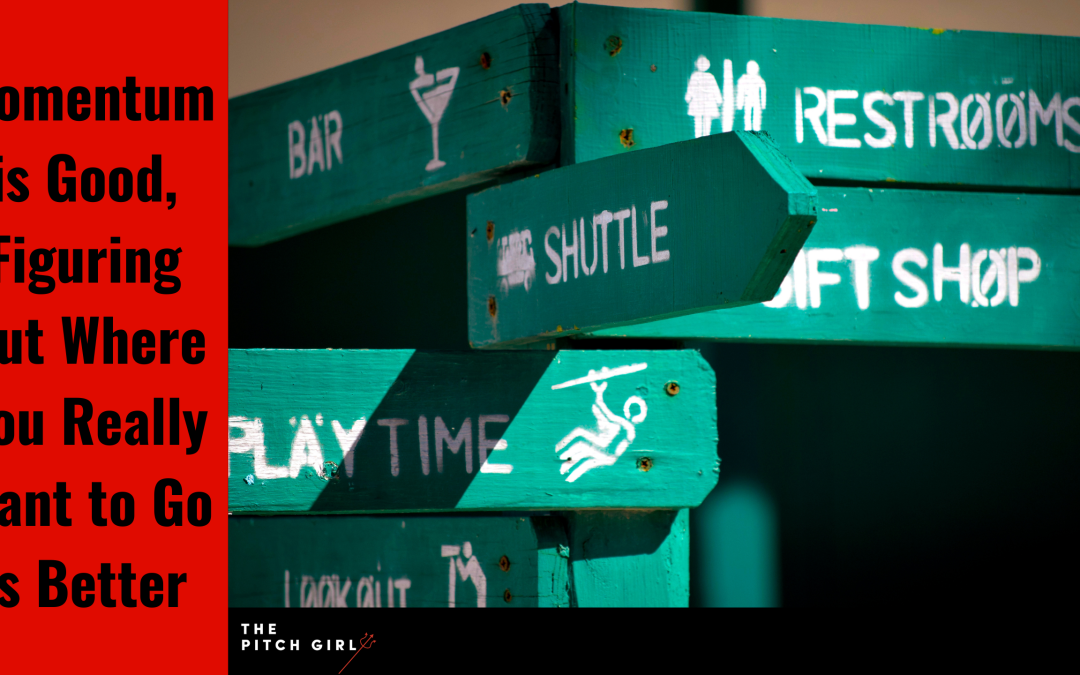Momentum is often celebrated as a sign of progress. Whether it’s in business, personal development, or any other area of life, the idea is that as long as you’re moving, you’re achieving something, however, this mindset can be misleading. Moving for the sake of moving can sometimes lead to aimless wandering rather than meaningful progress.
I read a lot of posts and articles about the importance of forward momentum. In some cases, it seems like momentum for momentum’s sake—just keep moving no matter what. But what if you’re moving and not quite sure it is the direction in which you want to go? Does it make sense to keep moving then?
Sometimes, it is better to stop and be more reflective. This doesn’t mean being lazy but taking the time to evaluate your path to ensure you’re not going down a road that won’t lead to your next chapter, action step, or destination—call it what you wish.
The Illusion of Progress
Forward momentum can create an illusion of progress. The constant push to keep moving can make us feel like we’re achieving something. Yet, without a clear sense of direction, we risk spending our time and energy on pursuits that don’t align with our ultimate goals. It’s like being on a treadmill—you’re moving, but you’re not actually getting anywhere. (I hate treadmills!)
The Importance of Reflection
Reflection is crucial for meaningful progress. Taking the time to stop and assess where you are can help you determine if you’re on the right path. Reflecting allows you to ask important questions:
- What are my goals? Define what success looks like for you.
- Is my current path aligned with these goals? Assess whether your actions are leading you toward your desired outcomes.
- What adjustments can I make? Sometimes, a small change in direction can make a big difference.
Balancing Action and Reflection
The key is to balance action with reflection. Regularly taking a step back to evaluate your progress ensures that your efforts remain aligned with your goals. This balance prevents you from falling into the trap of aimless movement and helps you make more informed decisions about your next steps.
Practical Tips for Effective Reflection
- Set Clear Goals: Define what you want to achieve in both the short and long term. Clear goals provide a destination for your efforts.
- Create a Plan: Outline the steps you need to take to reach your goals. A flexible plan can adapt to changes and new opportunities.
- Schedule Reflection Time: Regularly set aside time to review your progress. This dedicated time allows you to make necessary adjustments.
- Seek Feedback: Get input from trusted advisors or mentors to gain different perspectives on your progress and direction.
- Embrace Flexibility: Be open to changing your path when new information or opportunities align better with your goals.
The Role of Adaptability
Even with clear goals, the path to achieving them is rarely straightforward. New opportunities and challenges will arise, requiring you to change and adapt. Embracing flexibility ensures that your momentum remains productive and aligned with your ultimate direction.
Momentum is valuable, but direction is essential.
By taking the time to stop and reflect, you can ensure that your efforts lead to meaningful progress rather than aimless movement. It’s not just about moving forward; it’s about moving forward with purpose and intention. Reflection is not laziness; it’s a strategic pause to ensure that your path leads to your desired destination.
Are you moving forward with purpose, and do you feel comfortable about where you are going.? If you can’t answer that question with a definitive “yes” please reach out to me. Perhaps we can chart a different path.

